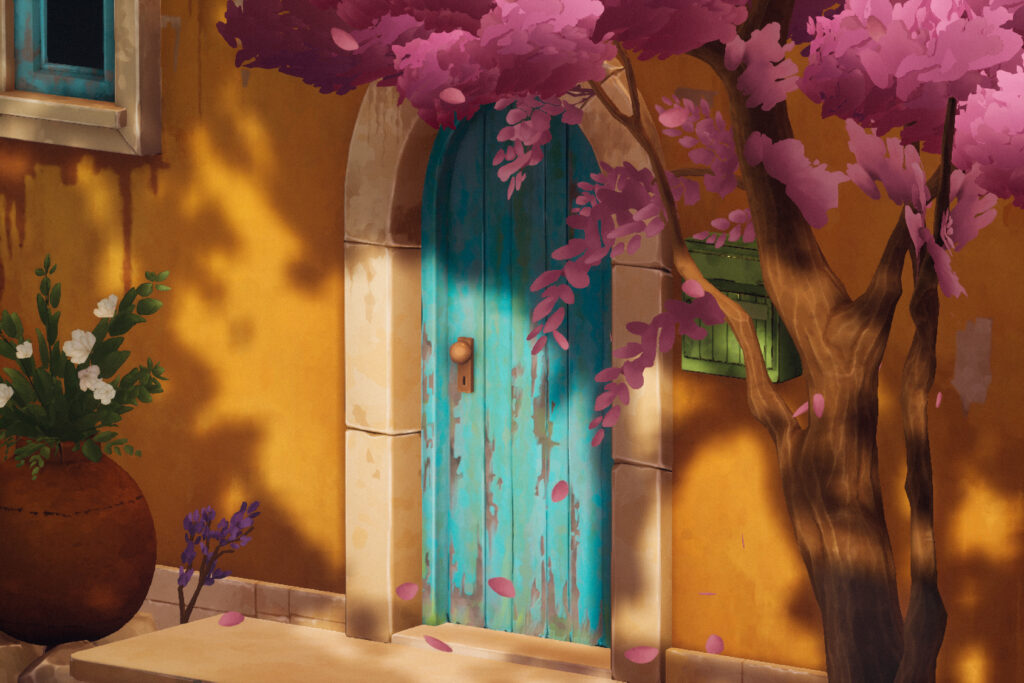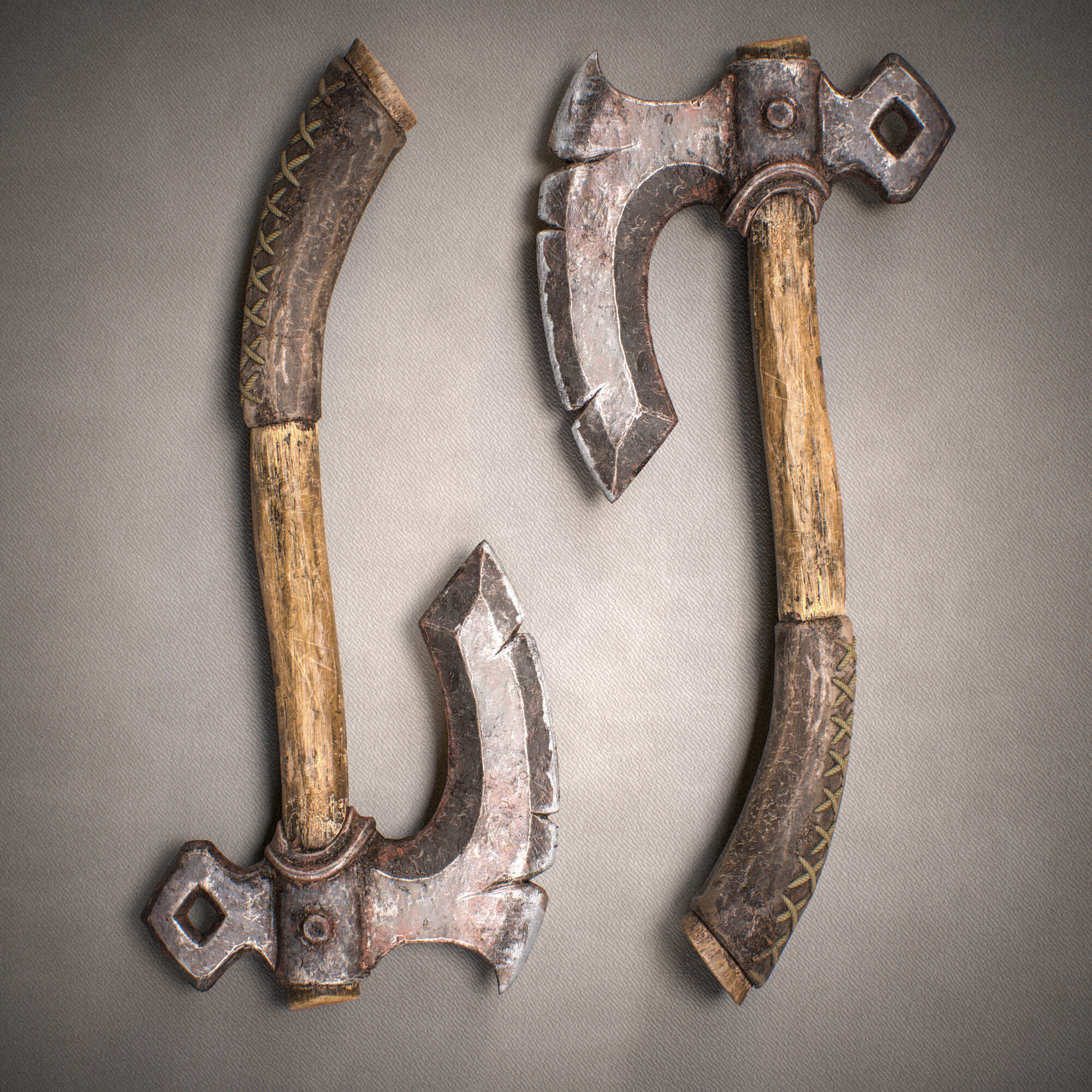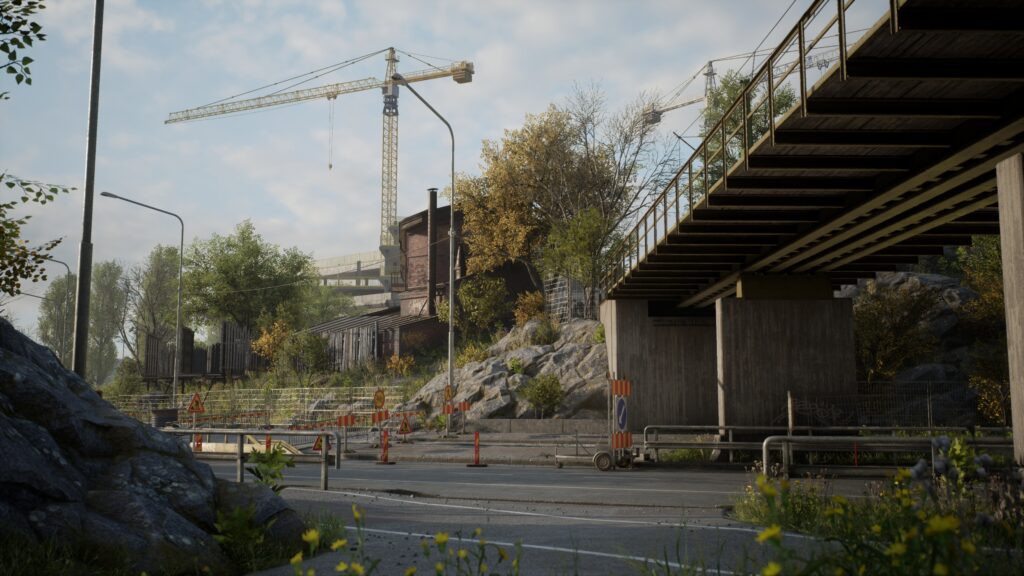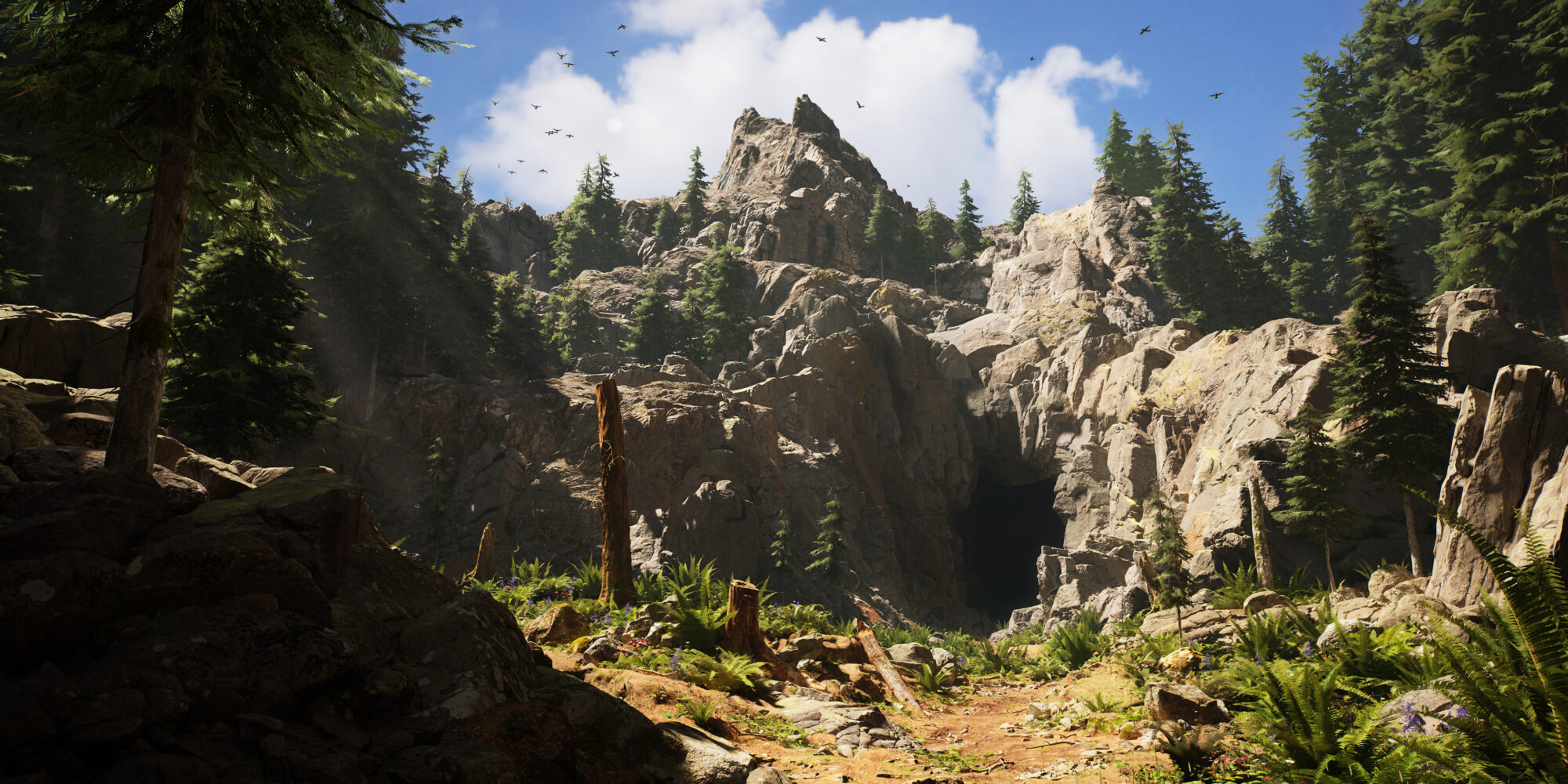French Provence Door


Introduction
Hi! My name is Natalya, and I’m a 3D artist specializing in stylized environments.
I originally earned a bachelor's degree in biology, but I never actually worked in that field.
Instead, I found myself increasingly drawn to visual arts, and once I discovered 3D art, everything just clicked; my interests and knowledge came together in a way that made me realize this is exactly what I want to do.
My passion lies in creating stylized environments, especially those filled with lush vegetation and natural elements. I love building cosy, atmospheric worlds that feel like they’ve come from a storybook.
References & Inspiration
This project is based on the concept “Warmth” by Simon Putz, whose artwork immediately caught my eye. I was deeply inspired by the warm, dreamy atmosphere and painterly aesthetic of the scene.
While I didn’t aim for a one-to-one recreation, my goal was to capture the same emotional tone and soft, inviting mood that makes the original piece feel so charming and cozy.
When gathering references for vegetation, I was particularly drawn to the work of Luiza R. Tanaka for Palia.
I also found a lot of inspiration in the environments and breakdowns shared by Jasmin Habezai-Fekri.

Goals
One of my goals for this project was to learn Unreal Engine 5.
Though I had some experience with other engines, this was my first full scene in UE5, and I wanted to explore how far I could push a stylized look.
Tools
- Blender
- ZBrush
- Substance 3D Painter
- Marmoset Toolbag
- Photoshop
- Unreal Engine 5
Blockout & Modelling
After gathering references, I began modeling the main elements of the scene in Blender.
One of the first things I did was set up the camera to match the composition of the original concept; this helped me stay close to the proportions and framing right from the start.
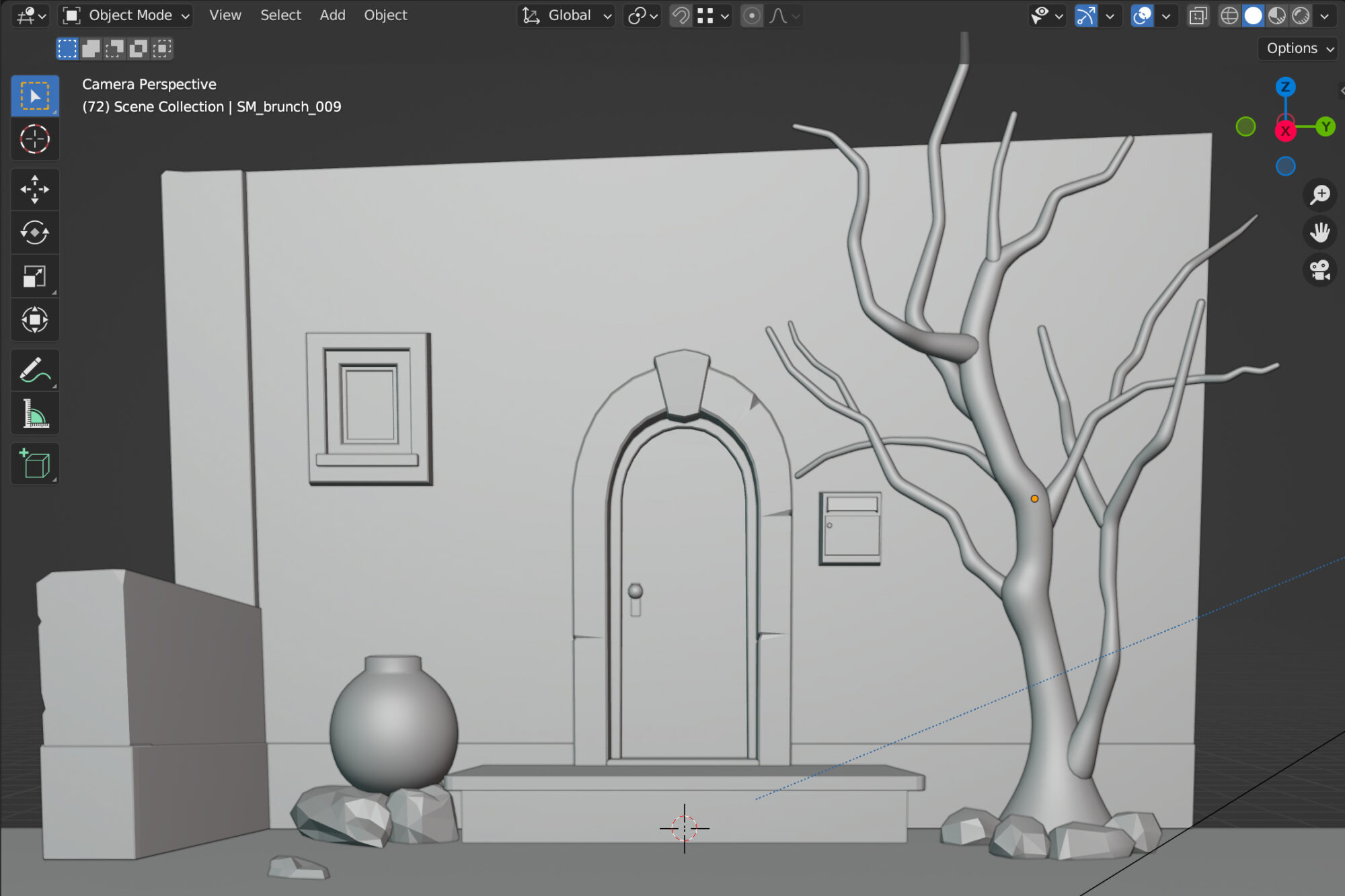
At this stage, I focused on creating a rough blockout of the key shapes and structures.
These initial models remained unchanged for quite a while, as I decided to pause detailed prop work in order to get familiar with Unreal Engine.
Since I planned to do the final render in UE5, I knew it was important to jump into the engine early and start building the environment directly where it would live.
Assets Workflow
For this project, I followed a consistent workflow for all the props to keep things organized and cohesive.

-
Sculpting in ZBrush
I imported each asset into ZBrush to create a detailed high-poly version.
This stage was pretty simple; I focused on adding subtle surface details using standard brushes and the Orb brush set to give the props a slightly worn look.Most of the detailing was concentrated around edges and surface irregularities to bring out that stylized, aged feel.
-
Low Poly & UVs in Blender
Back in Blender, I created the low-poly versions and unwrapped the UVs.
I kept the geometry clean and lightweight, making sure to preserve the main shapes. -
Baking in Marmoset Toolbag
In Marmoset Toolbag, I baked the maps by importing both mesh versions and manually adjusting the cage to avoid errors. Test bakes helped catch issues early and ensure clean results.
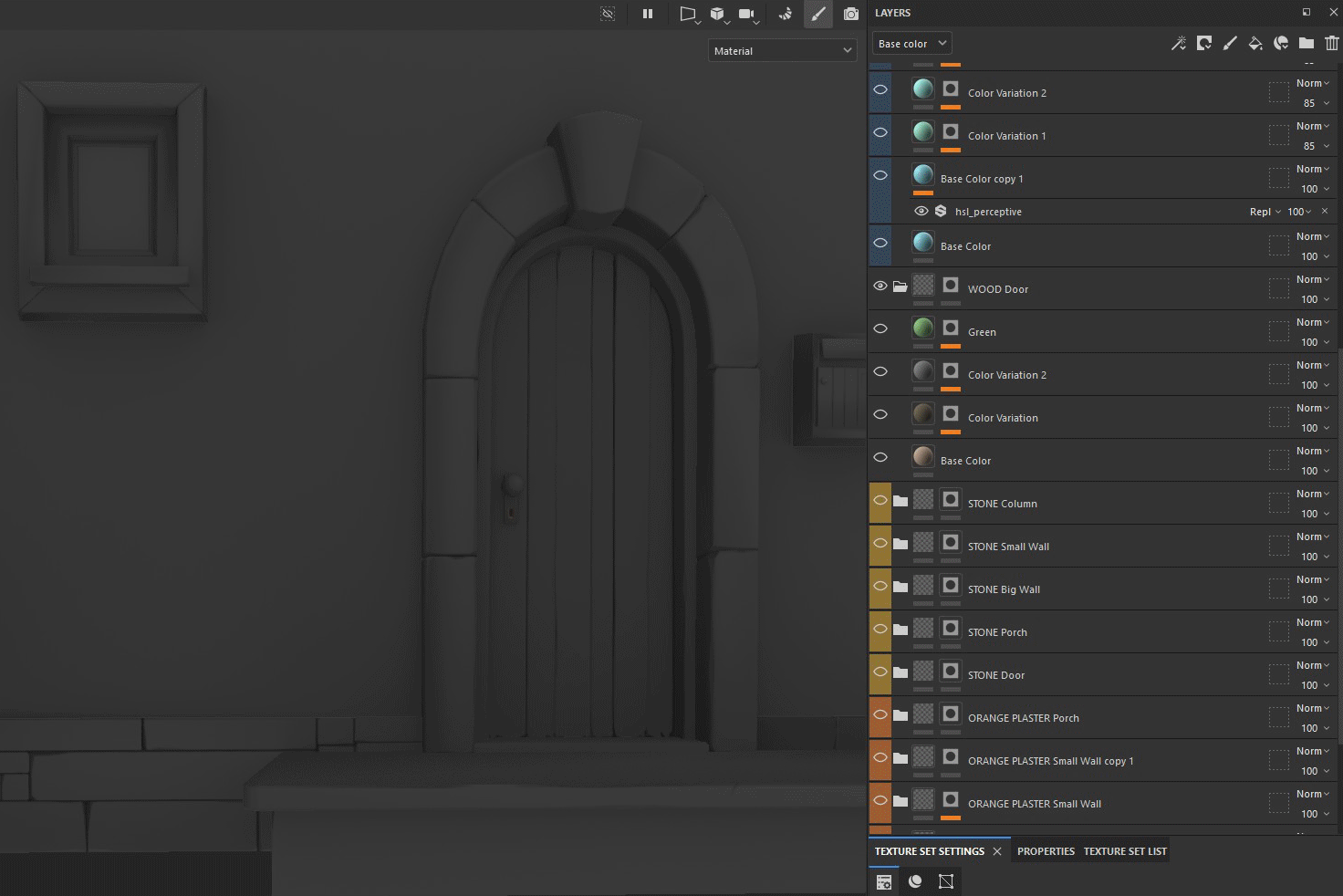
Texturing
Once the bake was done, I imported all the props into a single Substance Painter project.
Texturing everything together helped me maintain consistency across the entire scene; it was easier to keep the color palette balanced and make sure materials worked well side by side.
I began by organizing the scene into folders by material type: turquoise wood, orange plaster, pale stone, painted metal, etc.
Each material had a basic structure: a base color layer, ambient occlusion, and highlights to bring out form.
Then I moved on to detailing, combining procedural masks with hand-painted touches to add variation and a sense of wear.
To push the painterly feel of the textures, I often used the slope blur filter, varying its intensity and blending it with other effects to soften edges and give surfaces a more organic, illustrated look.
I frequently referred back to the concept to make sure the materials stayed true to the original tone and mood.
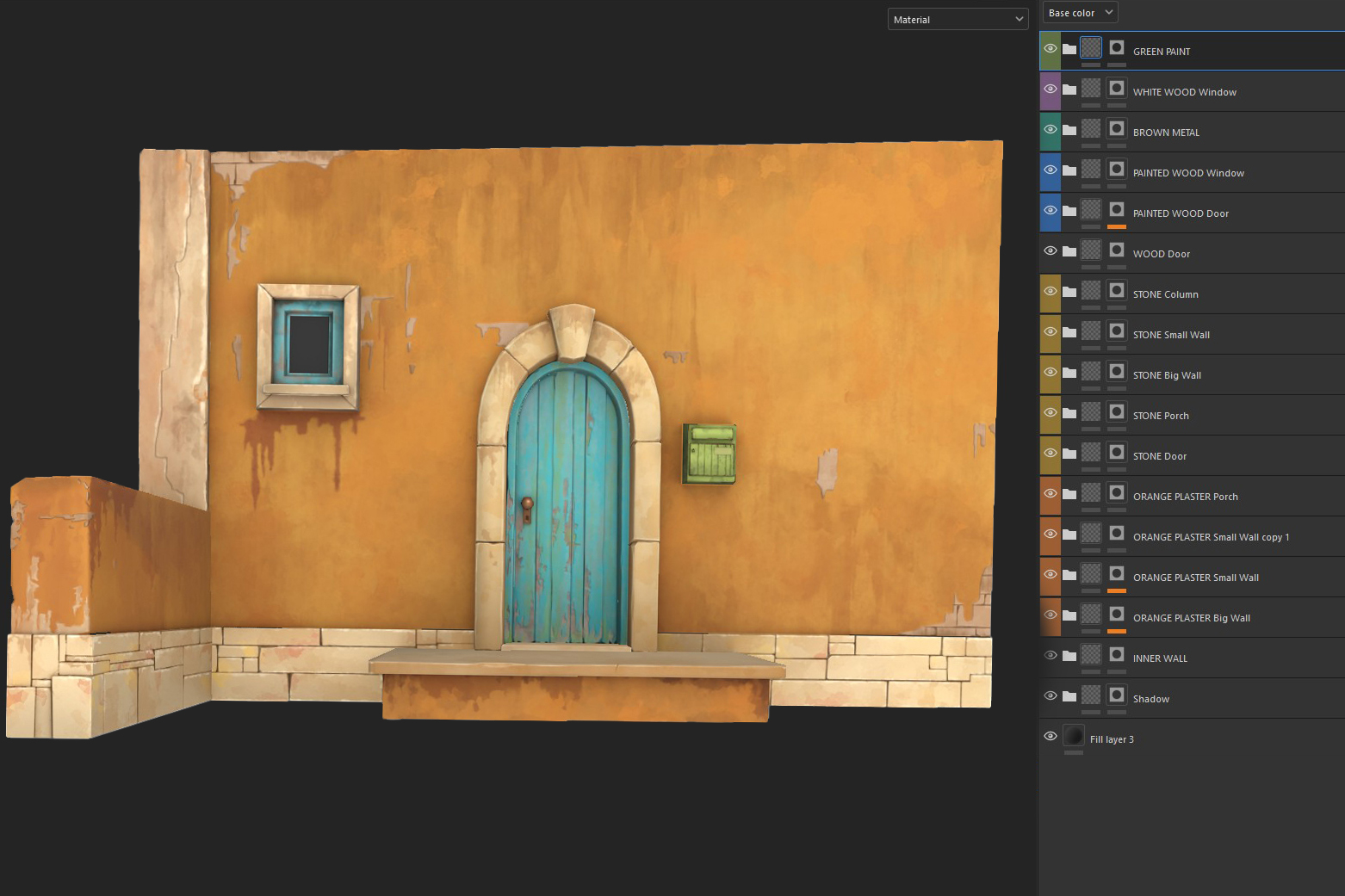
Landscape & Grass
After exploring several breakdowns and tutorials (especially Justin Wallace’s “Creating Stylized Grass in Unreal Engine 5: Part 1, Part 2”), I began building my own landscape and grass setup in UE5.
I created a simple base landscape and set up RVT blending early, using flat colors through material layers instead of textures.
This approach let me “paint” the terrain like a canvas, achieving a soft, illustrated look.
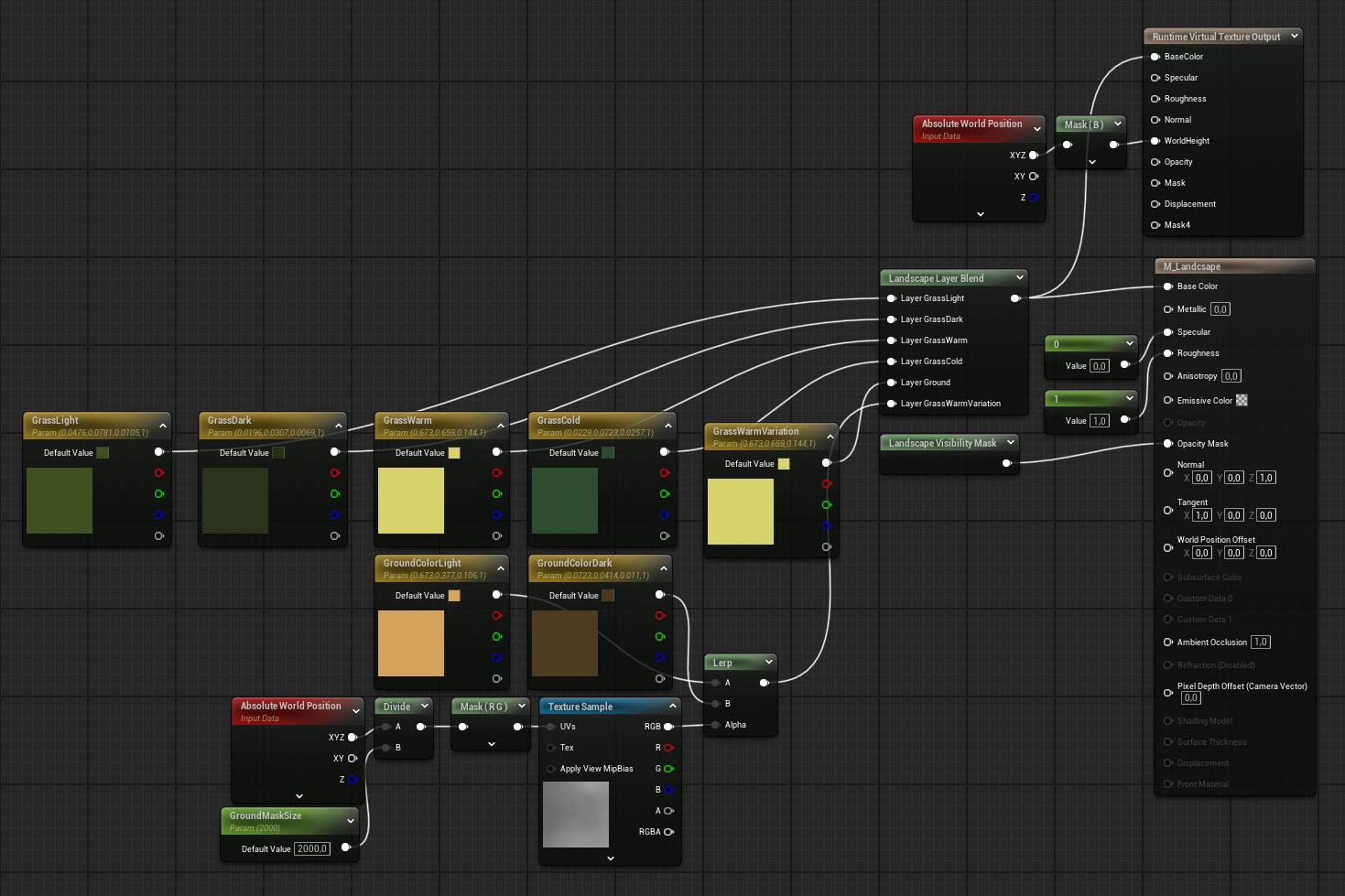
For the grass, I hand-painted a black-and-white texture in Photoshop, applied it as an alpha clip in Blender, and edited the geometry to match the shape.
By duplicating and rotating the planes, I formed a volumetric clump, then merged them and adjusted normals to face upward—a simple trick for cleaner, stylized shading.

In Unreal, I created an RVT-blended grass material with subtle wind animation.
The Z-Up Normals: Stylized Wind Blown Grass article also helped me refine both visuals and movement. Once satisfied, I moved on to building the rest of the scene.
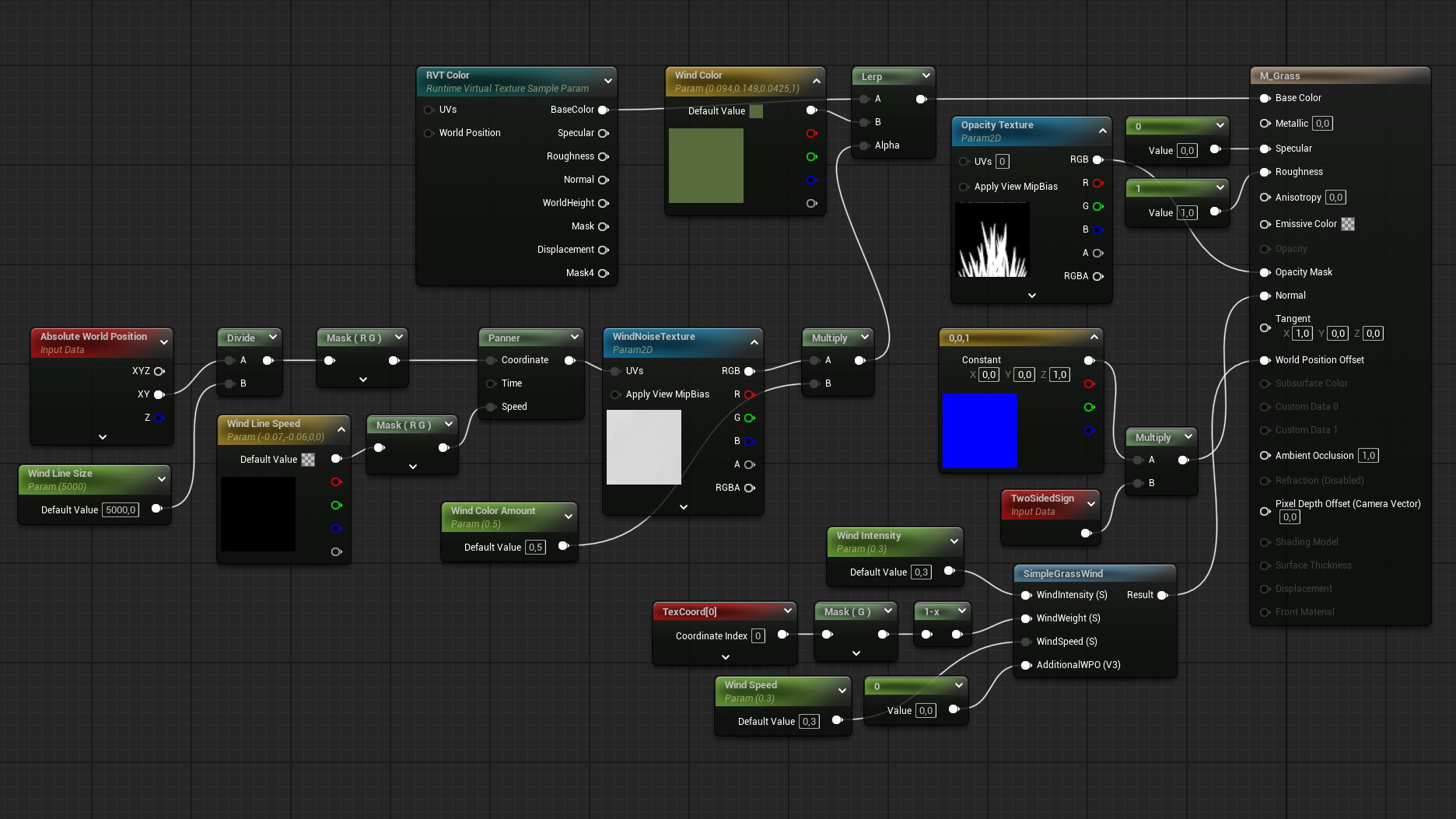
Tree & Foliage
For smaller vegetation, I started by analyzing the concept and listing all foliage types.
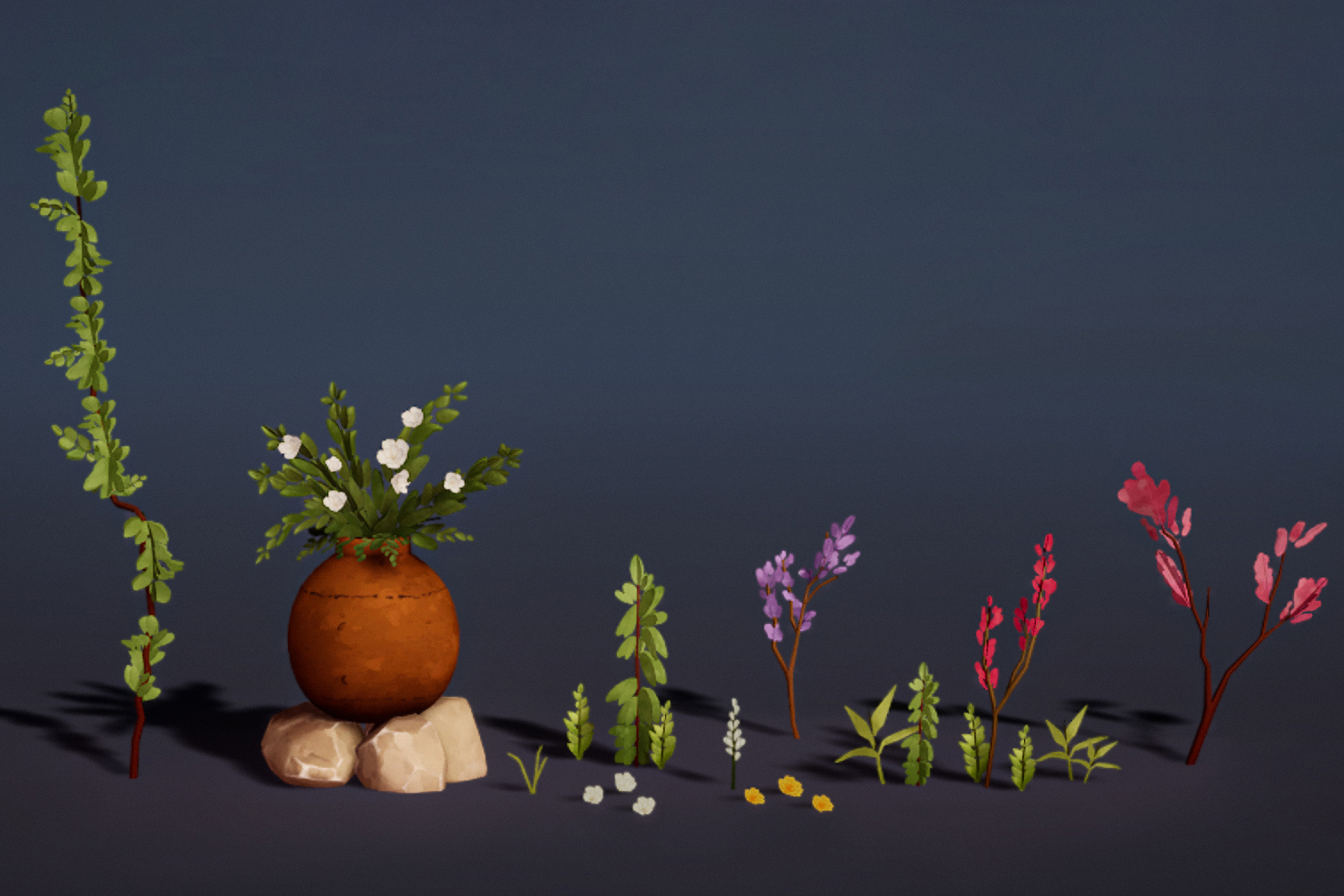
I then created a texture atlas with an opacity map in Photoshop, combining all plants into one image.

In Blender, I applied the texture and opacity map to a plane with a cutout material, then shaped the geometry to fit the outlines of each plant.
These cutouts were then arranged into layered cards to give volume. Each foliage type was grouped into its own mesh, with upward-facing normals for cleaner shading, and then exported to Unreal.

With all the assets ready, I started populating the scene with vegetation.
The more prominent elements, such as ivy, flower arrangements, and large branches, were placed by hand to ensure they matched the reference.
For smaller grasses and flowers, I used the Foliage Tool to scatter them and achieve a natural blend.
Tree Trunk
To build the tree, I used a single vertex in Blender and extruded it to form the trunk and branches. Once the base shape was in place, I adjusted the branch positions to give the tree a natural flow in 3D space.
Then I applied a Skin Modifier to generate geometry around the skeleton and used Ctrl + A to control the thickness of each segment. I smoothed the result using a Subdivision Surface Modifier (level 2).
The mesh was exported to ZBrush, where I refined the forms and sculpted bark details. I saved two versions of the model: a detailed high poly and a decimated version with reduced geometry that preserved the overall shape.
In Marmoset Toolbag, I baked the high-poly details onto the decimated mesh. After unwrapping the UVs in Blender, I textured the tree in Substance 3D Painter, staying true to the stylized look.

While setting up the tree material in Unreal Engine, I added an RVT-based blend between the tree base and the landscape.
It wasn’t strictly necessary, as the trunk is mostly hidden by rocks, but I included it as a subtle detail to improve integration with the environment.
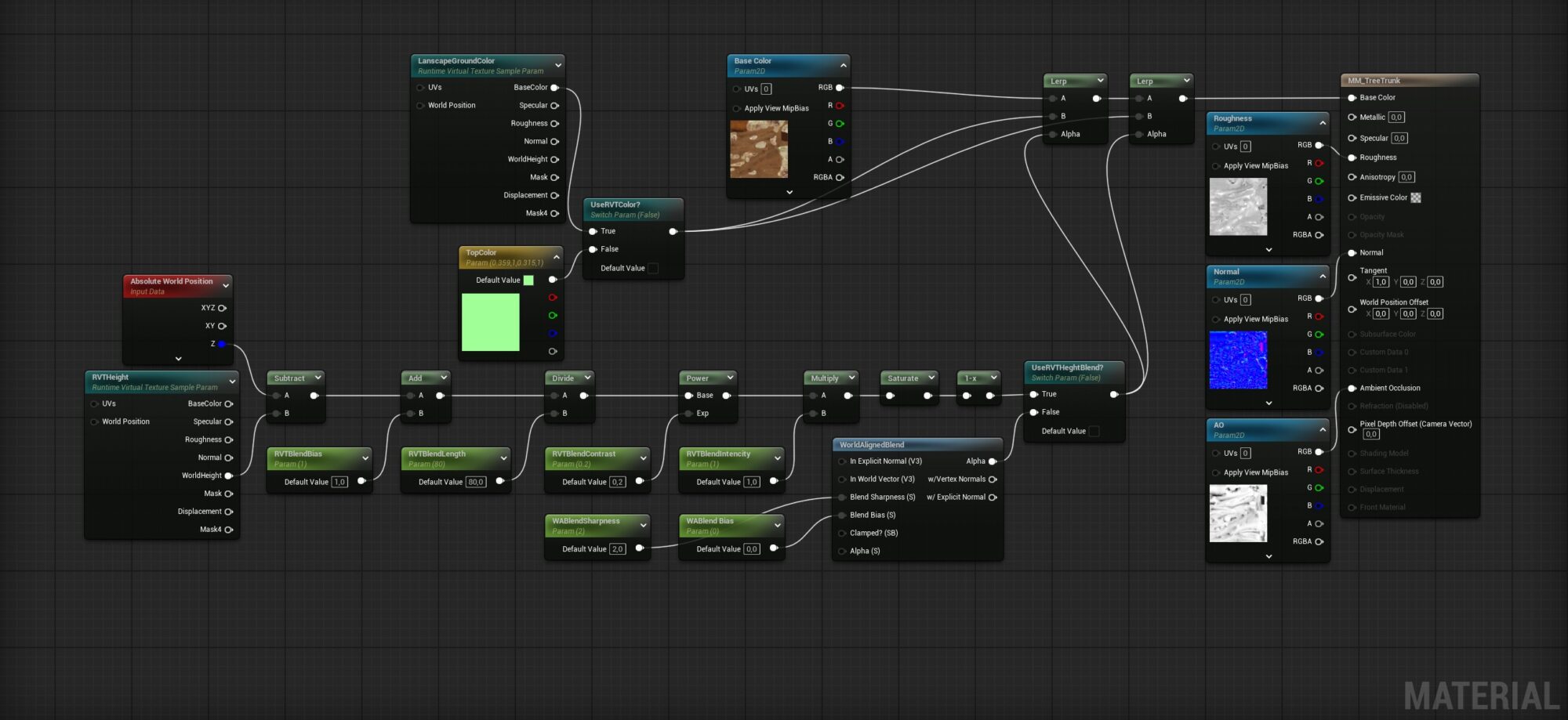
Tree Canopy
Creating the tree canopy turned out to be one of the most challenging parts of the entire scene. In the concept, the foliage is depicted with loose, expressive brushstrokes, and I was eager to capture that painterly feel, but translating it into 3D was far from straightforward.
I found a lot of inspiration in Viktoriia Zavhorodnia’s YouTube tutorials on stylized foliage. My first attempt followed one of her methods and looked great, but it didn’t match the concept. So I kept experimenting.
I started with a sphere in Blender, marked seams in Edit Mode, and used the “Reset UV” function to unwrap it, turning each polygon into a square.
This gave me UV Channel 1, which I later used to control leaf density and billboard scaling in Unreal Engine.
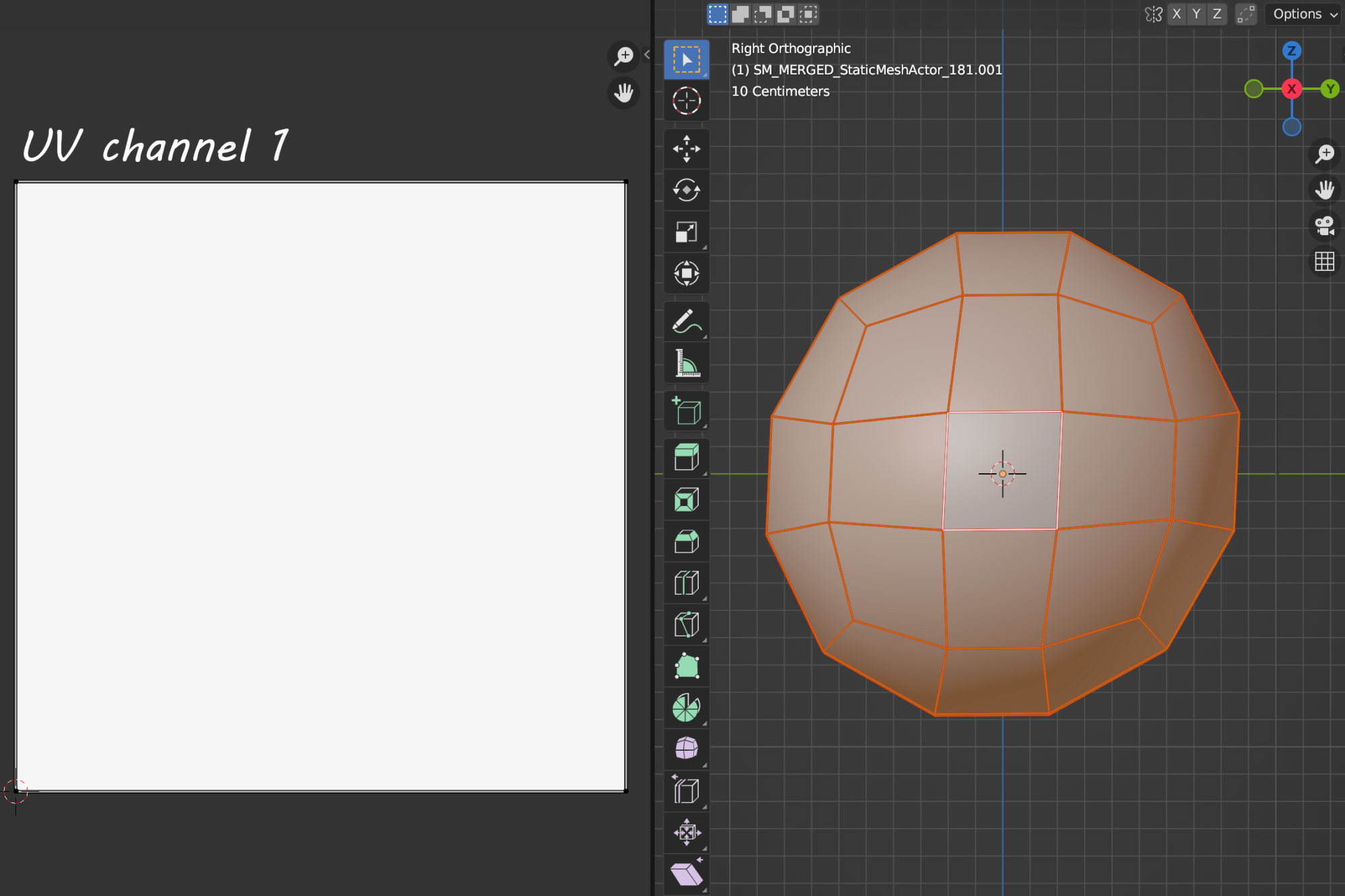
Then I painted a leaf atlas in Photoshop with four shapes inspired by the concept, each with its own opacity mask.
Back in Blender, I created UV Channel 2 for controlling orientation and randomly assigned one of the four leaves to each polygon, manually rotating them to match the natural flow from the concept.
I jumped between Blender and Unreal to preview and fine-tune the result.
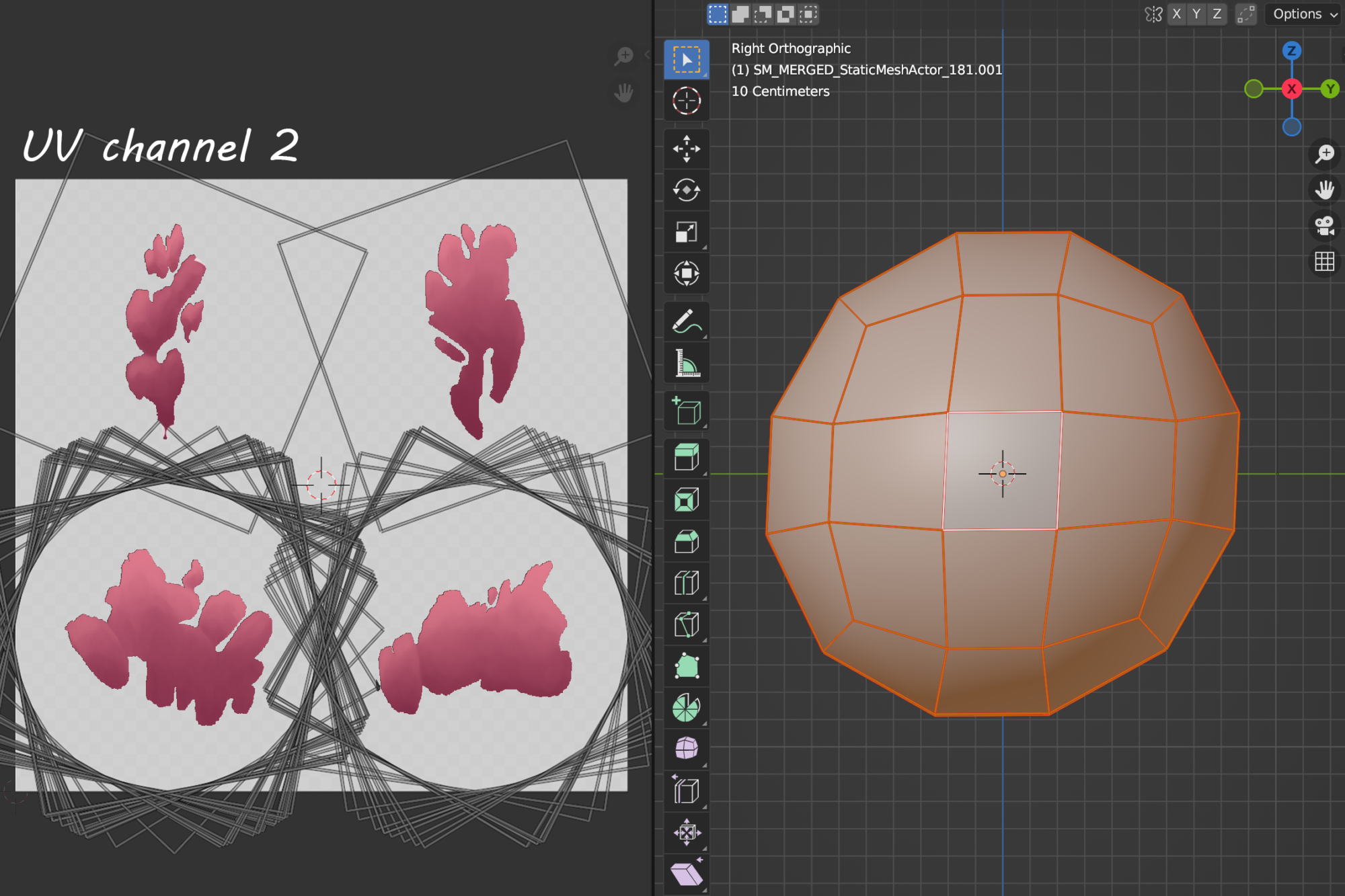
With the base leaf sphere ready, I created a second variation for more flexibility. Duplicating and transforming these in Unreal let me build up the canopy and recreate the painterly shapes and flow seen in the concept.
For key directional leaves that guide the scene’s composition, I hand-painted a separate atlas and placed them manually.
Since this was a personal project, I wasn’t strict with optimization and allowed myself multiple atlases.

The canopy material in Unreal was set to Unlit because the Lit version didn’t give me the soft stylized feel I wanted.
I faked lighting using gradient masks, edge highlights, and color overlays. A simple wind animation added life to the leaves.

As a final touch, I added a falling leaves particle effect for motion and atmosphere, using this tutorial: UE4 – Falling Leaves Particles.
Tip: Cascade is deprecated in UE5, so I used a custom Blueprint with a Particle System component. The full process here is Unreal Engine 5 Cascade Particles – They Still Exist.
Lighting
When working on the lighting, I aimed to do more than just bathe the scene in warm evening tones.
I wanted to recreate the strong central light spot from the original concept and build the entire composition around it.

I started by adjusting the base color and intensity of the Directional Light and Skylight. Then I created a custom mask in Photoshop, roughly matching the shape of the light patch in the reference.
This mask was applied to a plane inside Unreal Engine.
I iterated between Photoshop and Unreal several times, refining the shape until the light hit the areas I wanted.
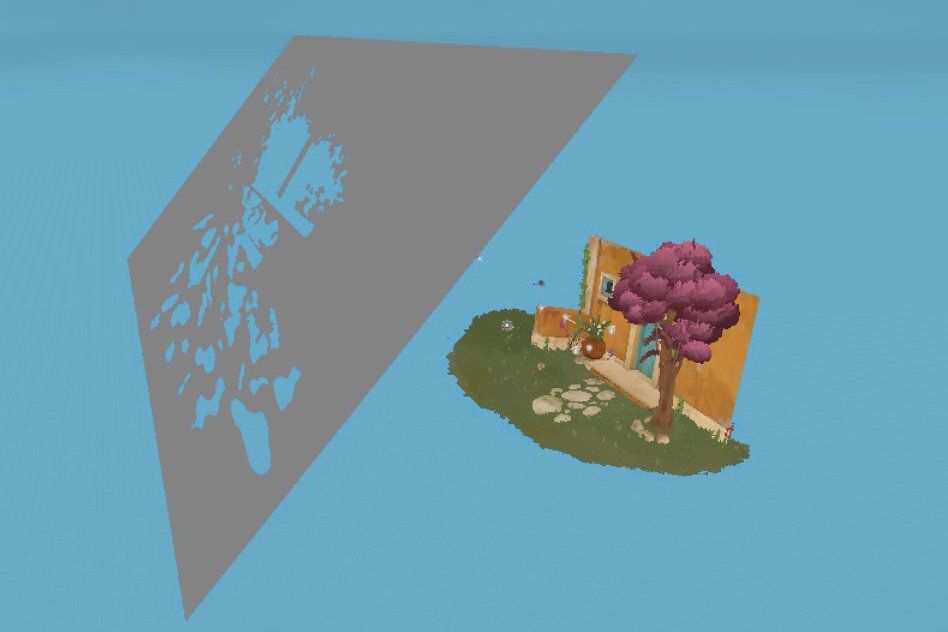
To keep the light plane from looking static in the final video, I added subtle motion to it.
This gave it a natural feel and helped integrate it better with the animated elements in the scene.

Once the focal lighting was set, I noticed the grass and shadowed corners of the scene became too dark.
Post Process Volume tweaks didn’t give the result I needed, so I placed a few Point Lights manually to brighten specific areas without affecting the central composition.

Final Touches
Wrapping up the scene turned out to be more time-consuming than expected.
With all assets ready, I focused on the subtle adjustments that bring everything together.
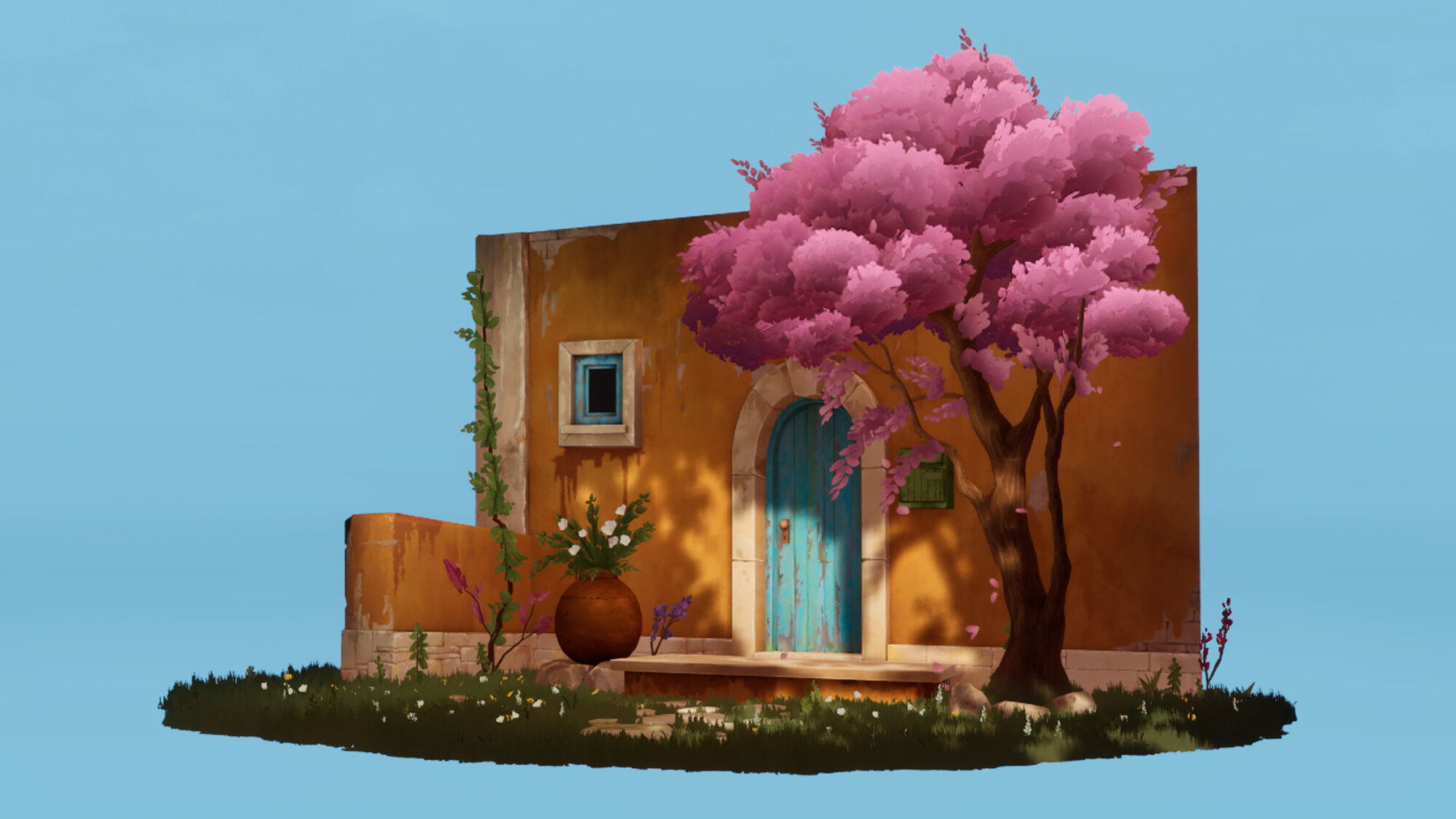
I made several trips back to Substance Painter to tweak base color maps, mostly fine-tuning brightness and hue to better match the overall lighting.
I also made minor adjustments to the scene’s lighting to improve balance and mood.

To complete the composition, I reshaped the landscape to match the silhouette from the concept and filled the sky sphere with a solid color.
Conclusion
This project was a big step forward for me, both artistically and technically, especially considering how recently I started learning Unreal Engine.
I gained a lot of new knowledge and confidence throughout the process, and it’s made me even more excited to dive into my next project.
Huge thanks to GamesArtist for the opportunity to share my work. I’ve learned so much from articles on this site, and I hope this breakdown will be helpful or inspiring to someone else just starting out.
Final diorama: https://youtu.be/d1X2rYWOebo?si=8nTaO9NM9pthDZ48


